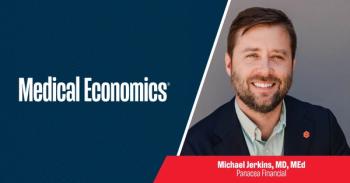
Nonphysician clinicians make up 40% of U.S. health care workforce, report finds
Key Takeaways
- Advanced practice providers now constitute over 40% of the U.S. health care workforce, driven by demand in surgical and primary care settings.
- APPs enable physicians to practice at the top of their license, improving efficiency and addressing physician burnout.
Advanced practice providers are showing up in large numbers in primary care and will soon make up half the workforce in that segment.
Nonphysician providers now make up more than two out of every five health care professionals in the United States, as hospitals and medical groups increasingly rely on advanced practice providers to meet growing patient demand and improve efficiency, according to a new report from Kaufman Hall.
The Physician Flash Report, released by the health care consulting firm and its parent company Vizient, found that 40.6% of the nation’s provider workforce is composed of APPs such as
“Advanced practice providers like physician assistants and nurse practitioners play a vital and increasingly visible role in health care,” said Matthew Bates, managing director and Physician Enterprise Service Line leader with Kaufman Hall. “When
The increasing use of APPs is largely being driven by rising demand in surgical and primary care settings, according to the report. These providers typically require less time and investment to train than physicians, enabling them to enter the workforce more quickly amid growing clinician shortages.
Still, the economics of physician practices remain challenging. The average annual subsidy hospitals and health systems paid per physician reached $312,528 in the first quarter of 2025—a 6% increase from the previous year. The report cautions that the downstream revenue physicians generate may not fully offset these growing investments.
Meanwhile, hospitals saw a decline in daily patient volume in March, driven by a drop in seasonal respiratory illnesses, according to Kaufman Hall’s National Hospital Flash Report. Key indicators including daily discharges, operating room minutes, and equivalent patient days all fell by 4% to 5% compared to February. Average length of stay held steady.
Even with the lower patient volumes, hospital expenses remained elevated due to rising supply and drug costs.
“Hospitals need to remain vigilant about their expenses, especially as the United States enters a period of economic and policy uncertainty,” said Erik Swanson, managing director and Data and Analytics Group leader with Kaufman Hall. “With revenue largely flat, finding efficiencies that can reduce expenses is mission critical.”
The National Hospital Flash Report is based on data from more than 1,300 hospitals through Strata Decision Technology. The Physician Flash Report draws from information on over 200,000 providers.
Newsletter
Stay informed and empowered with Medical Economics enewsletter, delivering expert insights, financial strategies, practice management tips and technology trends — tailored for today’s physicians.




